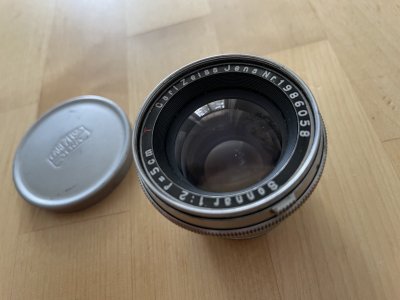Indeed they were, this gives me an opportunity to show off some of my early coated Kodak Ektars.
Kodak, like Zeiss, was an early adopter of lens coatings beginning in 1940. As some of you may know, the launch of the Kodak Ektra rangefinder camera included a lineup of 6 lenses for this system. Unique for the time, every lens in the system came coated from the factory.
The prewar run of lenses like all of my examples were coated on interior surfaces only as the material Kodak was using for vacuum deposition at the time was softer than later lens coatings, although I believe it would still be considered a hard coating as it was more durable than some earlier types of coatings. Rudolph Kingslake identifies the material used by Kodak at the time as Calcium Fluoride. Care should be taken in cleaning the internal surfaces of these lenses though, as many cleaning substrates can scratch the coating. It's best to treat them similarly to front surface mirrors.
In addition to being coated, the Ektra Ektars also made use of Kodak's new (at the time) rare earth element high reflation, low dispersion glass rather than ordinary crown glass. This glass contained compounds of Tungsten, Tantalum and Lanthanum (no Thorium yet) but no Silica.
I have a couple of these lenses and in my experience, all perform exceptionally. All are date coded 1940 (EY).
First up we have the Kodak Ektar 35mm f/3.3, this was the wide angle lens for the Ektra.
View attachment 4825657
View attachment 4825658
This lens is a five element design of the Heliar type similar to the 100mm f/3.5 found on the Kodak Medalist. This shouldn't be a surprise, as both lenses were designed by Kodak engineer Fred E. Altman.
View attachment 4825660
View attachment 4825661
View attachment 4825662

































